We are accustomed to referring to St. Peter as the “Rock” because Our Lord called him that when He founded the Church on Peter’s confession of faith:
“Thou art the Messiah, the son of the living God!” (Mt 16:16).
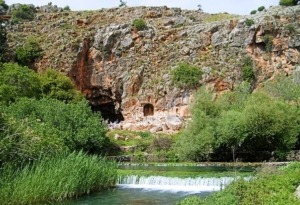 That encounter took place at Caesarea Philippi (in the Golan Heights in the north of Israel today). The place had, as a sort of backdrop, a wall of stone called Banias, where an ancient temple to the god Pan used to be.
That encounter took place at Caesarea Philippi (in the Golan Heights in the north of Israel today). The place had, as a sort of backdrop, a wall of stone called Banias, where an ancient temple to the god Pan used to be.
It’s easy to see why rocks were very much on the mind of Christ at that moment, and that imagery may be why Jesus responded to Peter’s confession with a solemn oath:
“Thou art Peter, and upon this rock I will build my church” (v. 18).
There is nothing like that promise of the Lord to build His Church on the Rock. He had already changed the apostle’s name from Simon to Peter, a name in Aramaic—Kepha— that is directly related to the word “rock”, and then He set His Church firmly on him.
A History of Rocks
If you know a little of biblical history, it wouldn’t surprise you to see that the whole history of God’s people is bound up with rocks. Jesus was totally immersed in that history:
- All the Patriarchs and leaders built altars of stone and offered sacrifice to God: Noah (Gen 8:20); Abraham (Gen 13:18 Gen 22:2); Isaac (Gen 26:25); Jacob (Gen 35:7); Moses (Ex 24:4); Saul (1 Sam 14:35); David (2 Sam 24:25);
- The Law was given to the People of Israel at Mount Sinai (Ex 20, Deut 5; I’ve been there, and I can assure you that it is one massive rock);
- The Prophets’ lives and actions were bound up with rocks: Samuel (1 Sam 7); Elijah (1 Kgs 19, I Kgs 18); Ezekiel (Ez 43) among others;
- Joshua’s first act after entering the Holy Land was to build a rock altar to offer thanks to God (Josh 4);
- Many other biblical characters offered sacrifice to God on stone altars: Gideon (Jdgs 6); Manoah (Jdgs 13); Jeroboam (1 Kgs 12); the Maccabees (1 Macc 4); Zerubbabel (Ezra 3); among others;
- King David established the site of the future Temple on a threshing floor made of stone (2 Sam 24).
And don’t forget that David dispatched Goliath with a stone (1 Sam 17)! I could go on, but you get the picture. Rocks seem to be part and parcel of salvation history.
Which brings me to the point about our Christian faith: Did you know that Christ spent His last few hours before the Crucifixion praying…on a rock?
The Rock of Gethsemane
The Gospel of Matthew tells us that Jesus went into the Garden and “fell prostrate in prayer” (Mt 26:39). St. Luke adds that “his sweat became like drops of blood” (Lk 22:44).
Sacred Tradition supplies another detail that seems to be borne out by archeological evidence: Jesus prayed in the Garden of Gethsemane on a huge flat rock, around which His fervent disciples later built a church.
Here is that rock:
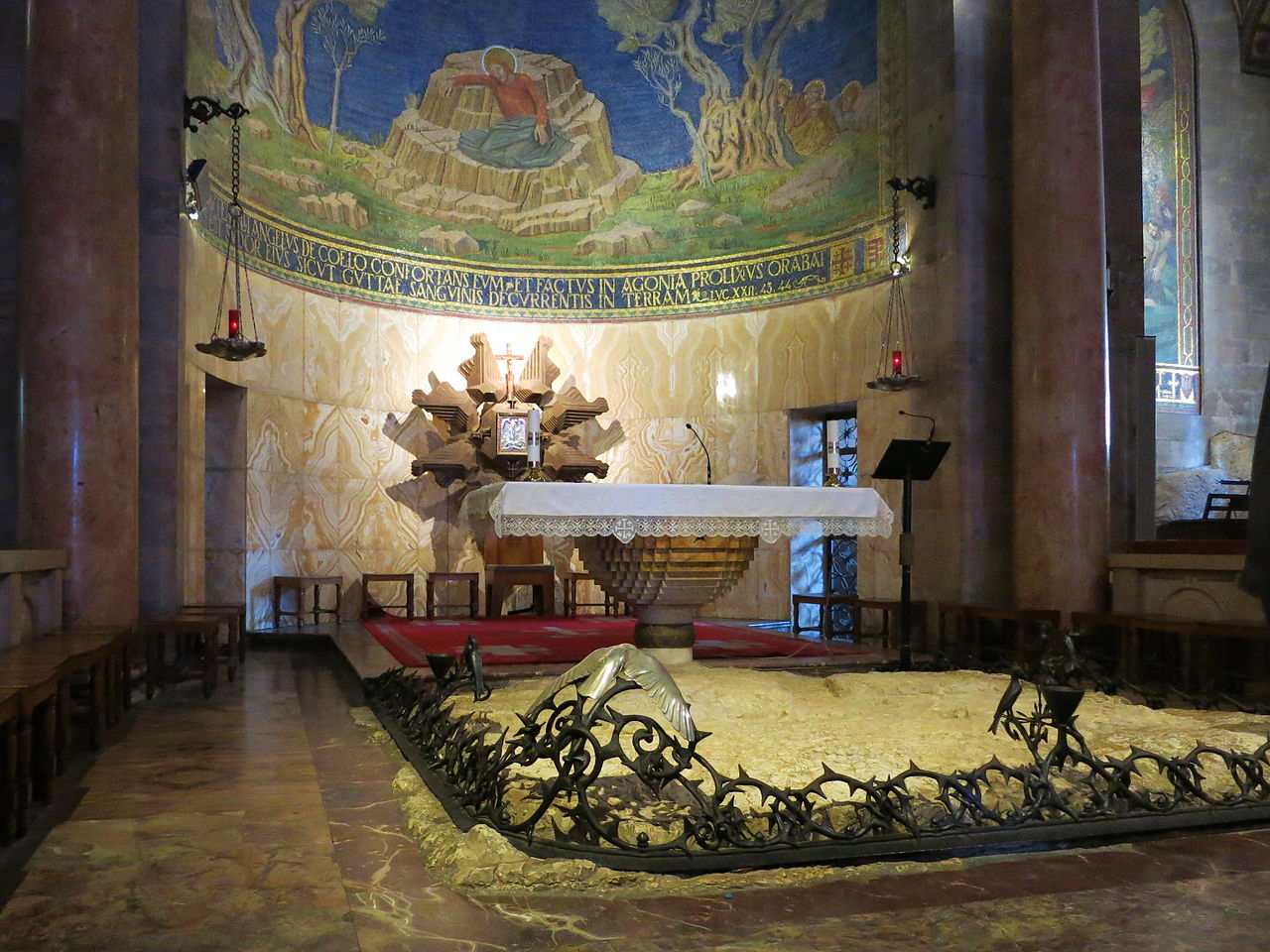
The Gospel account further tells us that while Jesus was praying there, the disciples were “sleeping from grief” (Lk 22:45).
I must confess that I know how the disciples felt that night. Years ago, when I went on a pilgrimage to the Holy Land, our group visited this church…and while praying next to this rock, I fell asleep!
It had been a long and tiring day, but was that a good excuse for falling asleep there?
Like the foolish apostles who thought they could endure those agonizing hours with Him that night, I couldn’t even endure the fatigue of the day!
The Garden Itself
You will remember from the Gospel story that the Garden is located in a grove of trees on the Mount of Olives. The name, Gethsemane, literally means “olive press” in Jesus’ native language of Aramaic.
At least a portion of that same grove of olive trees has been well preserved over time. Here is a wide view of a few of the trees in the Garden:

On the pilgrimage I referred to above, we learned that several of the trees, hundreds of years old, had a venerable pedigree and were likely the scions of ancient trees that Jesus may have prayed under during His time on earth.
And one of them, reputed to be over 2000 years old, would have been growing in that same place when Jesus was alive. Here is a picture of that blessed tree:
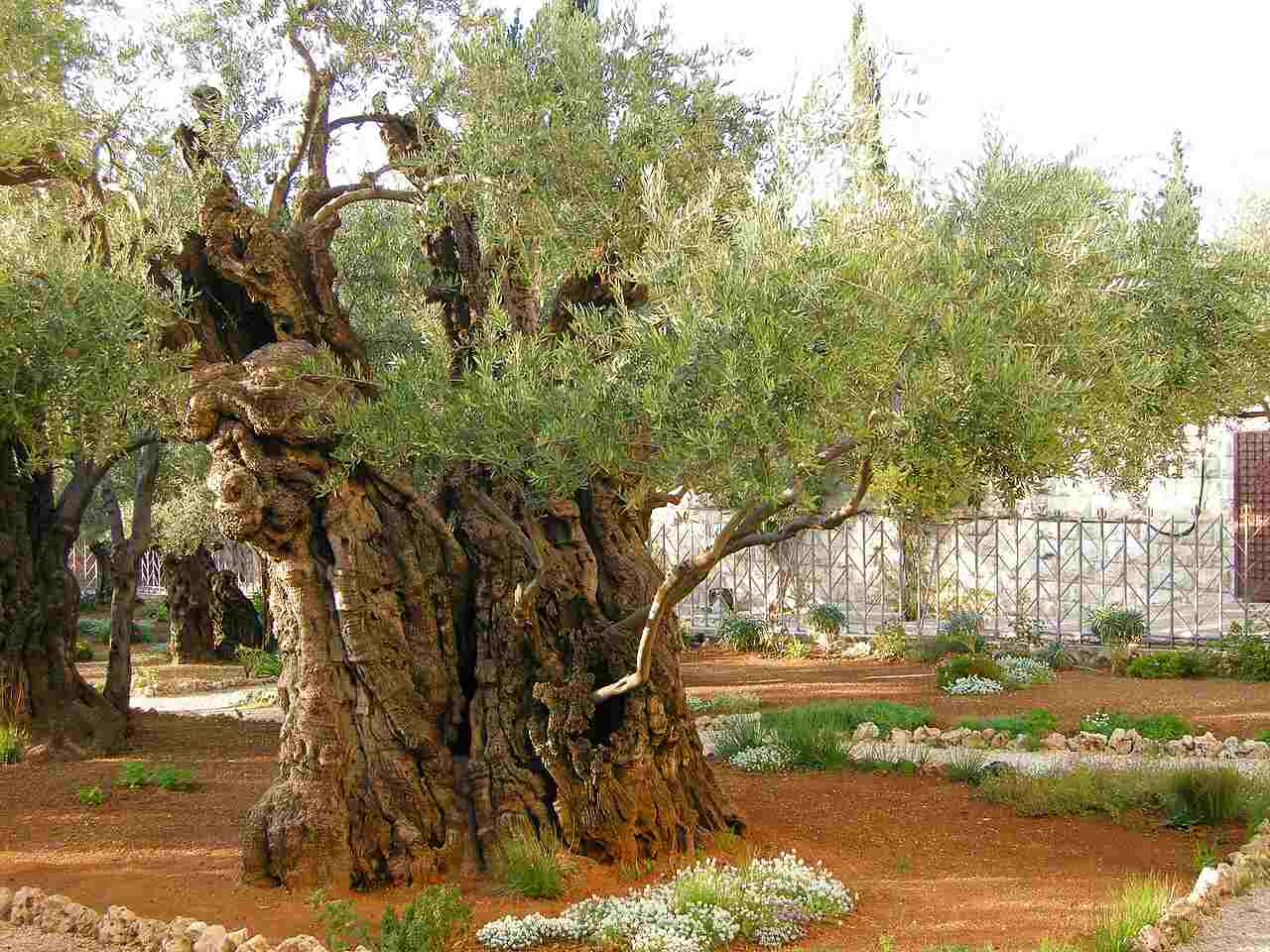
Fulfillment of Ancient Prophecies
The Garden was a familiar place to Our Lord. The Gospel of John says that “Jesus had often met there with his disciples” (Jn 18:2).
Thus the place became, in every way, the fulfillment of an ancient biblical symbol hearkening back to the very creation of man:
- Adam and Eve betrayed God the Father in a Garden at the dawn of time;
- Judas betrayed God the Son in a Garden in the fullness of time.
The “Garden” metaphor thus becomes a set of bookends encompassing all of salvation history. Peter, James, and John also fulfilled the prophecy in another way:
They slept the sleep of despair in the face of Jesus’ temptation, just as Adam had done in the beginning when the ancient tempter approached and seduced his wife, Eve.
Old Adam did not sound off like he should have at that critical moment. Apparently, he was in a deep sleep, like the disciples.
The Church of All Nations
This all leads us to the point of our story today: a marvelous and fascinating church has been built on the site called the Church of All Nations.
Its title “All Nations” is both a recognition of the dozens of nations that contributed funding for its construction
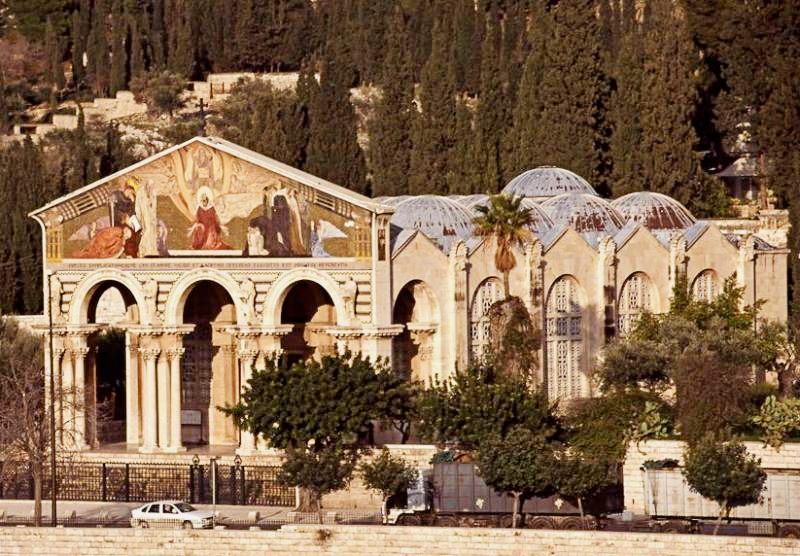
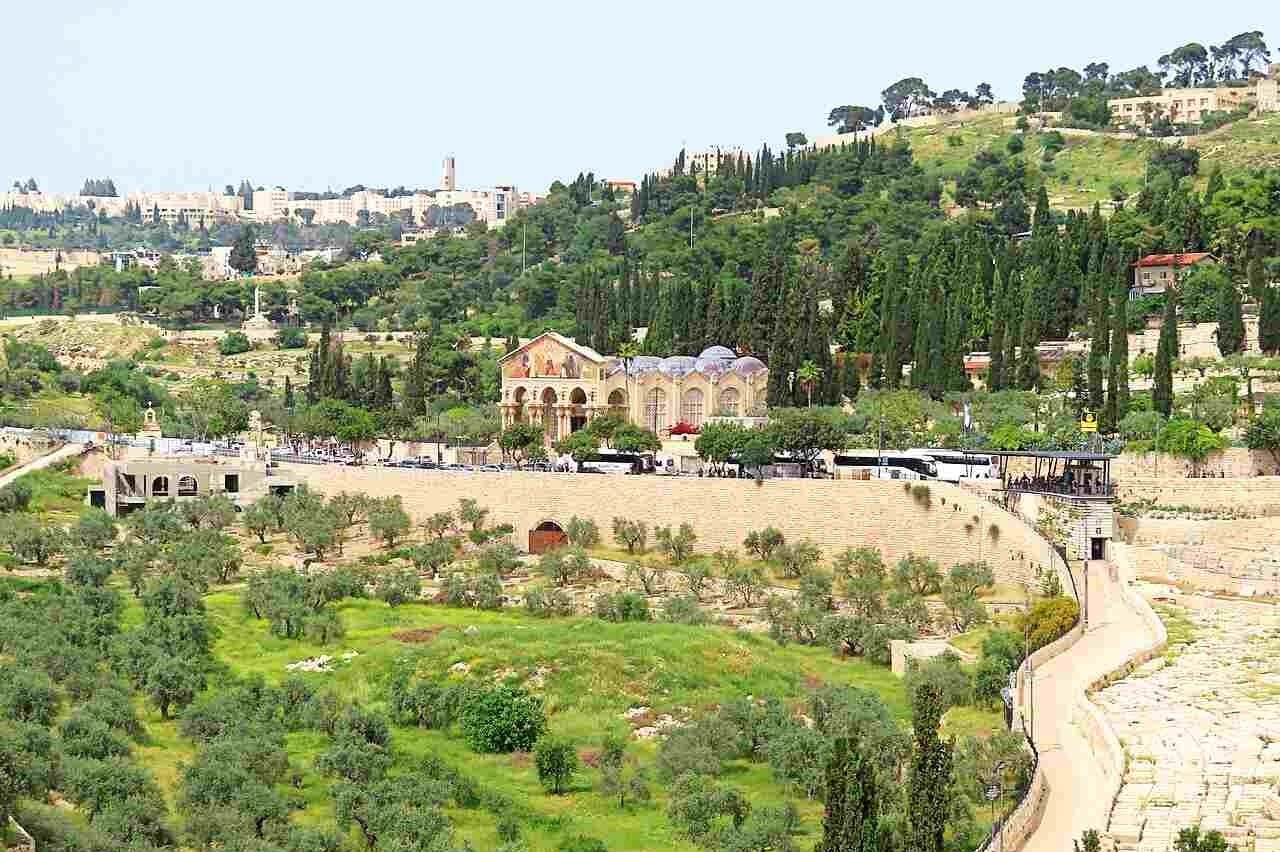
The church’s distinguishing mark, however, is not that so many peoples gave money to build it but rather, that it literally enshrines the Rock where Jesus prayed on the night before He died.
On the night of the Last Supper, Jesus would have walked past the Temple and out one of Jerusalem’s Eastern Gate across Kidron Valley to pray in the Garden (Lk 22:39).
I’d just like to give a few observations about the Church of All Nations so that you can see how important and symbolic a place it has in our own Christian history.
(By the way, I came across a 26-second video of the Church and the Garden of Gethsemane from an aerial view, which is quite impressive and definitely worth a half-minute of your time! Check it out by clicking the next button.)
The Rock
As you can see from the picture above, it is surrounded by a low iron wreath of sorts that symbolizes the Crown of Thorns.
The bird images woven into the wreath represent countless souls who share Christ’s Passion in one way or another all throughout history. They drink from the symbolic “cup of suffering” that Jesus asked might pass from Him (Mt 26:39).
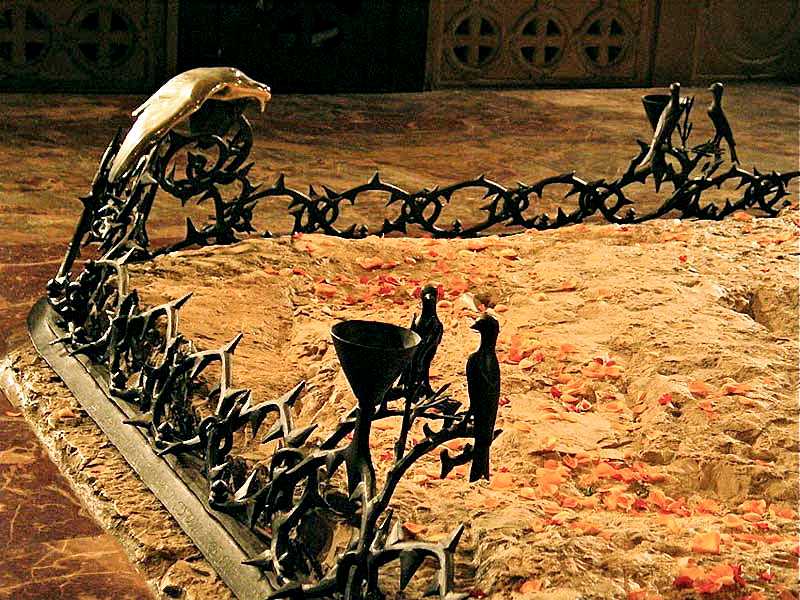
Everyone who has ever been in this church notes how dark it is—and how quiet. The building was designed to be dark, or at least with less lighting than a normal 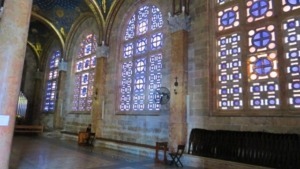 church, to give the atmosphere a noticeable sense of the dark Garden at night.
church, to give the atmosphere a noticeable sense of the dark Garden at night.
There are lights over the sanctuary of necessity, but the rest of the church is lit only by the natural light that comes through the blue stained glass windows in the walls. In other words, it’s dark!
The silence of the environment is the fruit of the very experience the church commemorates: the Agony. Our Lord’s suffering calls out to the pilgrim at this place and invites reverent meditation on His sacrifice.
The Domes
In the picture of the church’s exterior above, you’ll notice that the church is topped by a number of domes, 12 to be exact, which are symbolic of the 12 Apostles. The domes were funded by the 12 largest donor nations, and each nation’s crest is emblazoned in mosaic on the inside of the respective dome.
To me, churches of this style always look like they have an overturned carton of eggs on the roof, but the architect didn’t ask my opinion on the matter before he built it. Hmmm.
On the inside, however, their domes are fabulous to behold: they are filled with beautiful imagery of the star-filled sky that Jesus must have looked up into on that night of nights.
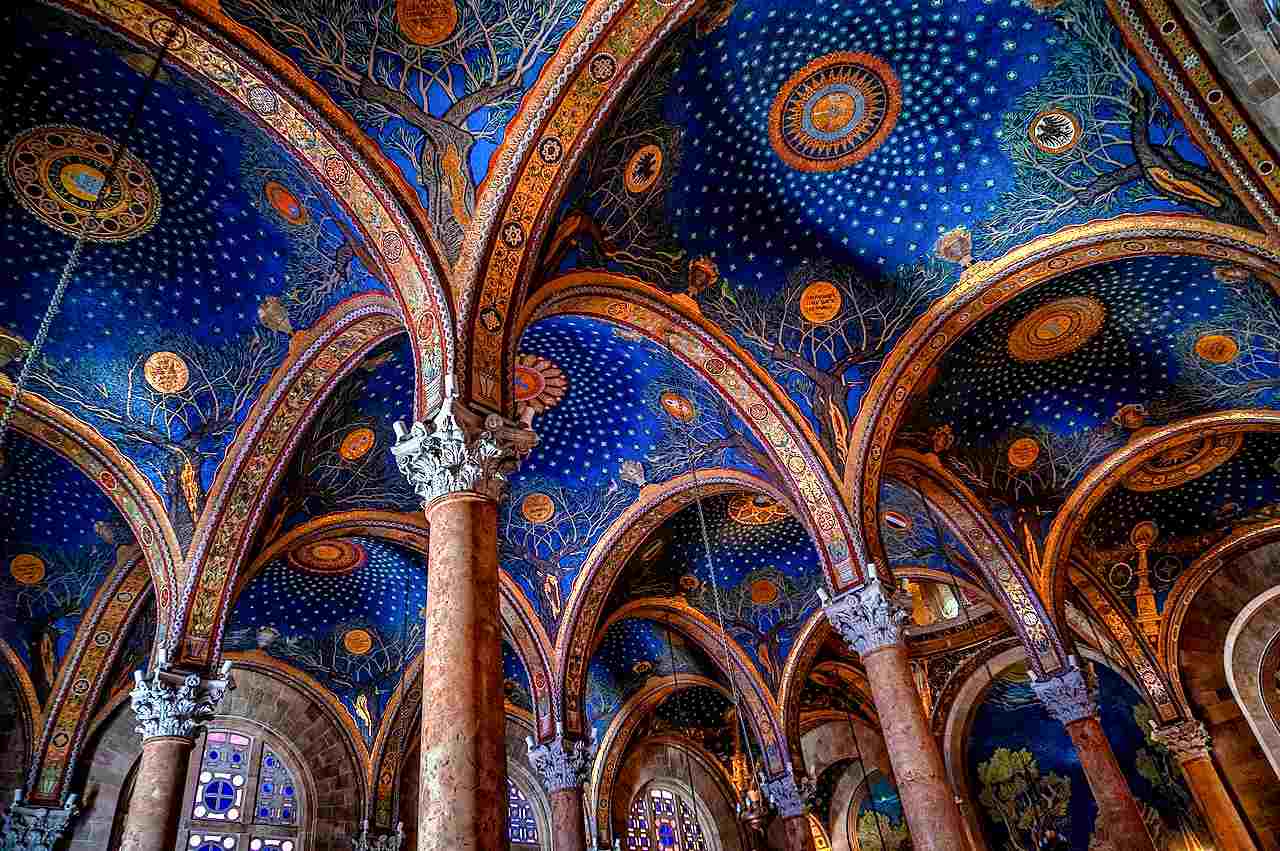
The Artwork
The artwork of this most noble church is exquisite all around: mosaics, paintings, sculptures, domes, columns, etc. The ancient mosaics on the floor deserve mention because they date back 1500 years!
At time of the Crusades (~1000-1200 AD) a second church was built over the earlier Greek church that had been destroyed. The current church is the third to be built on the site.
The triangular façade over the entranceway is also made entirely of mosaics and depicts Christ at the Final Judgment with poor and simple people on His right and noble powerful people on his Left.
Perhaps that was a reminder of the Parable of the Sheep and the Goats, where the powerful were likened to the goats as a reminder to use their worldly power properly lest they risk eternal retribution.
A Tangible Reminder
One wonders how many times Peter, James, and John may have gone back to Gethsemane after the Resurrection. Perhaps they did so to humbly call to mind their own failure in their Lord’s darkest hour. Perhaps they went to give thanks for His mercy on their souls.
And maybe, just maybe, Peter went there as a tangible reminder for him to ask for the grace he needed to be the “Rock” Christ called him to be.
———-
[Note: This article is a reproduction of the Sacred Windows Email Newsletter of 10/15/23, so it does not end with the regular Soul Work section. Please visit our Newsletter Archives.]
Photo Credits: Via Wikimedia Commons. Feature image of statue (קרן, CC BY-SA 3.0); Banias (gugganij, CC BY-SA 3.0); Rock of Agony (Ariel Gera אריאל גרא, CC BY-SA 3.0); Ancient Olive tree (Yoav Dothan, Public domain); Church, close and remote views (بدارين, CC BY-SA 4.0); Wreath of Thorns (Custodia Terrae Sanctae); Blue Windows (Hoshvilim, CC BY-SA 4.0); Interior Domes (GameOfLight, CC BY-SA 3.0); Church Façade (Diego Delso, CC BY-SA 3.0); Artwork Pictures; Garden of Gethsemane (Israel Tourism Consultants).
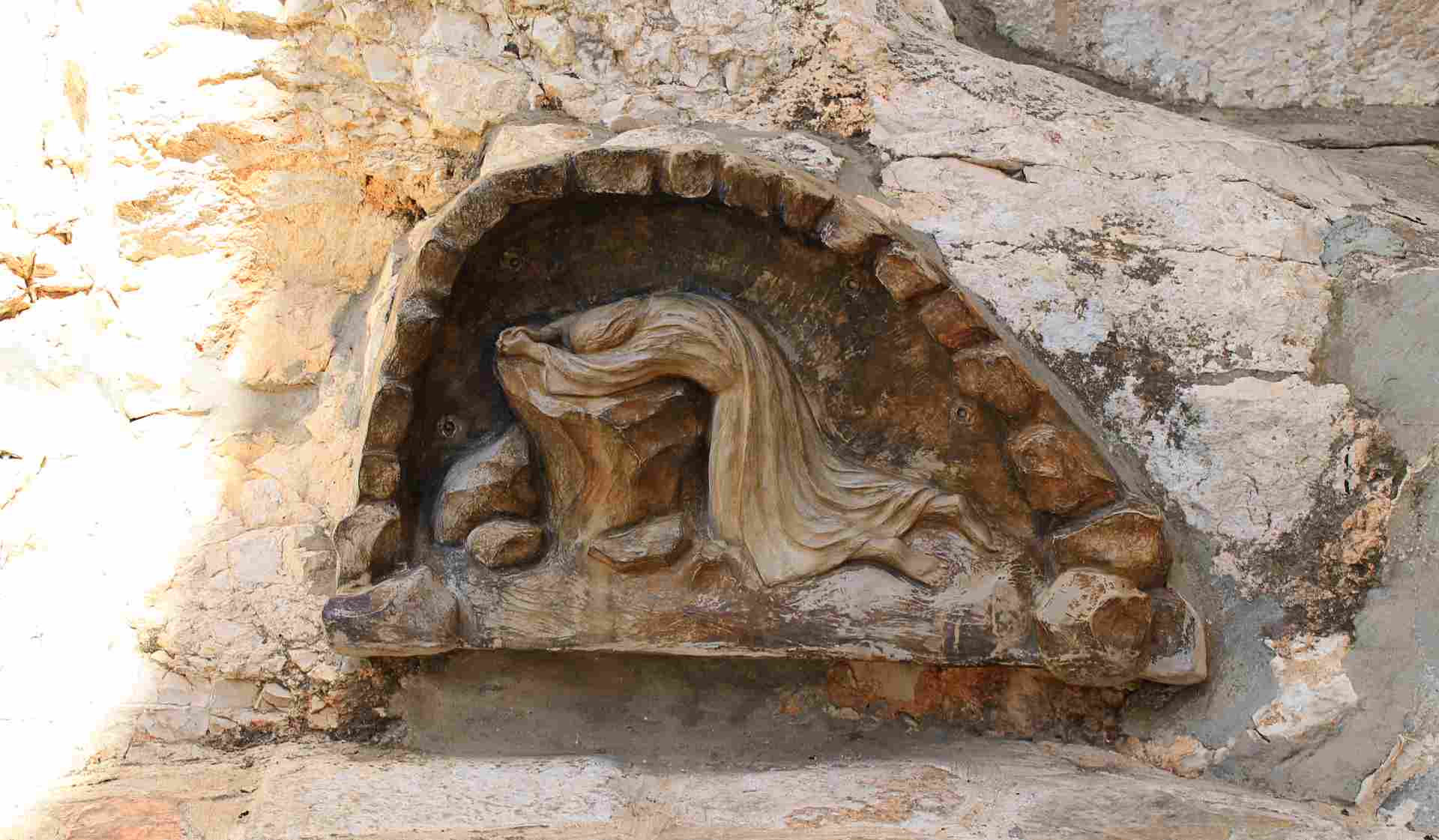

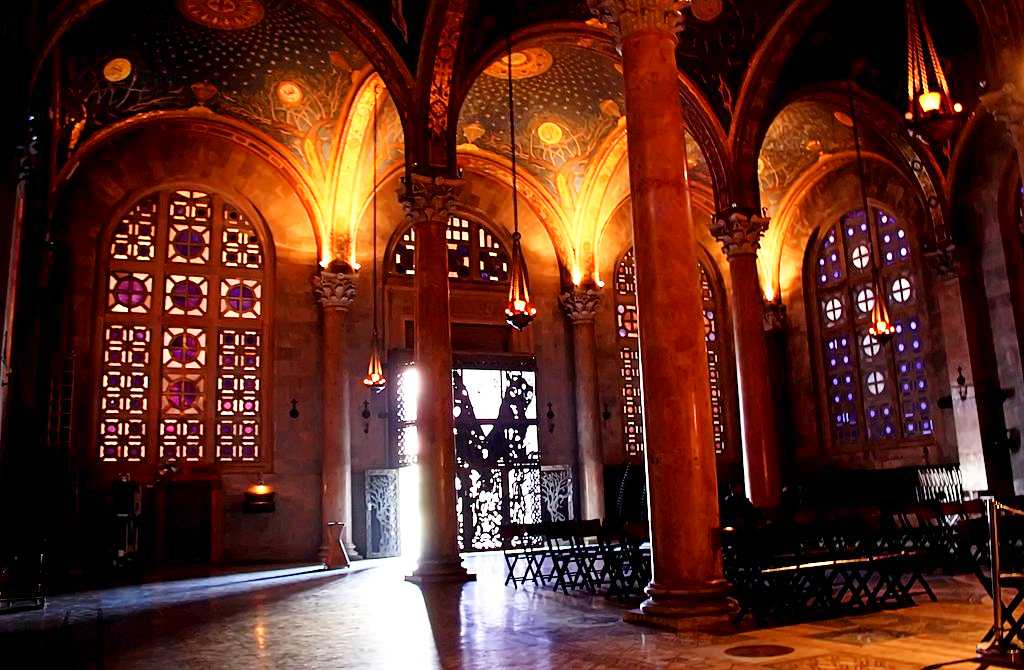
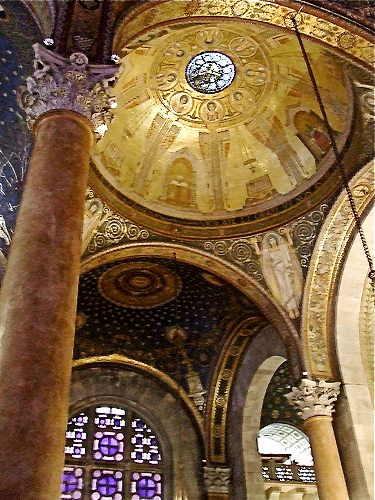
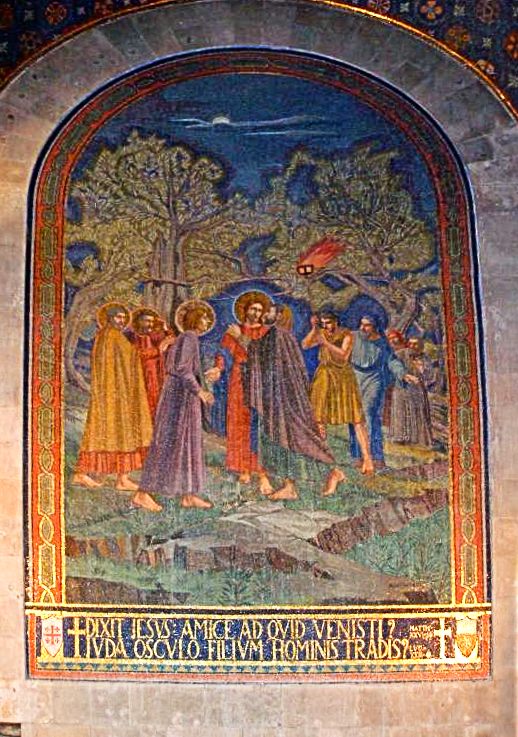
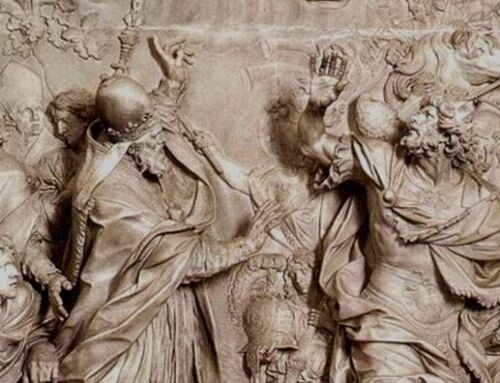
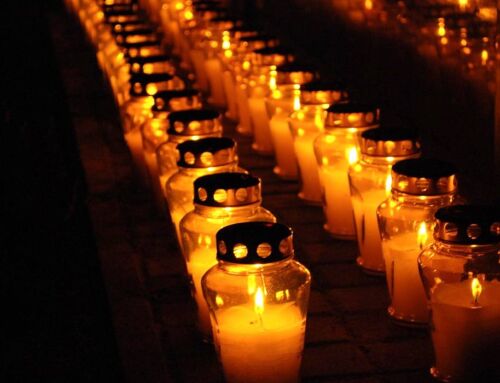
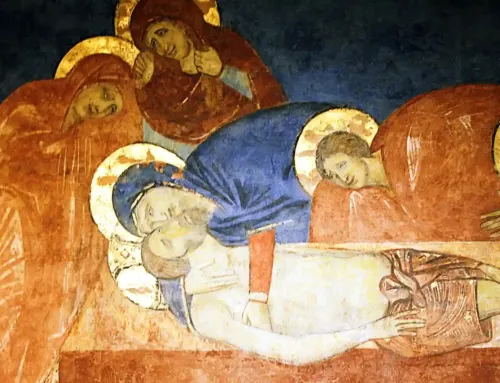
Leave A Comment